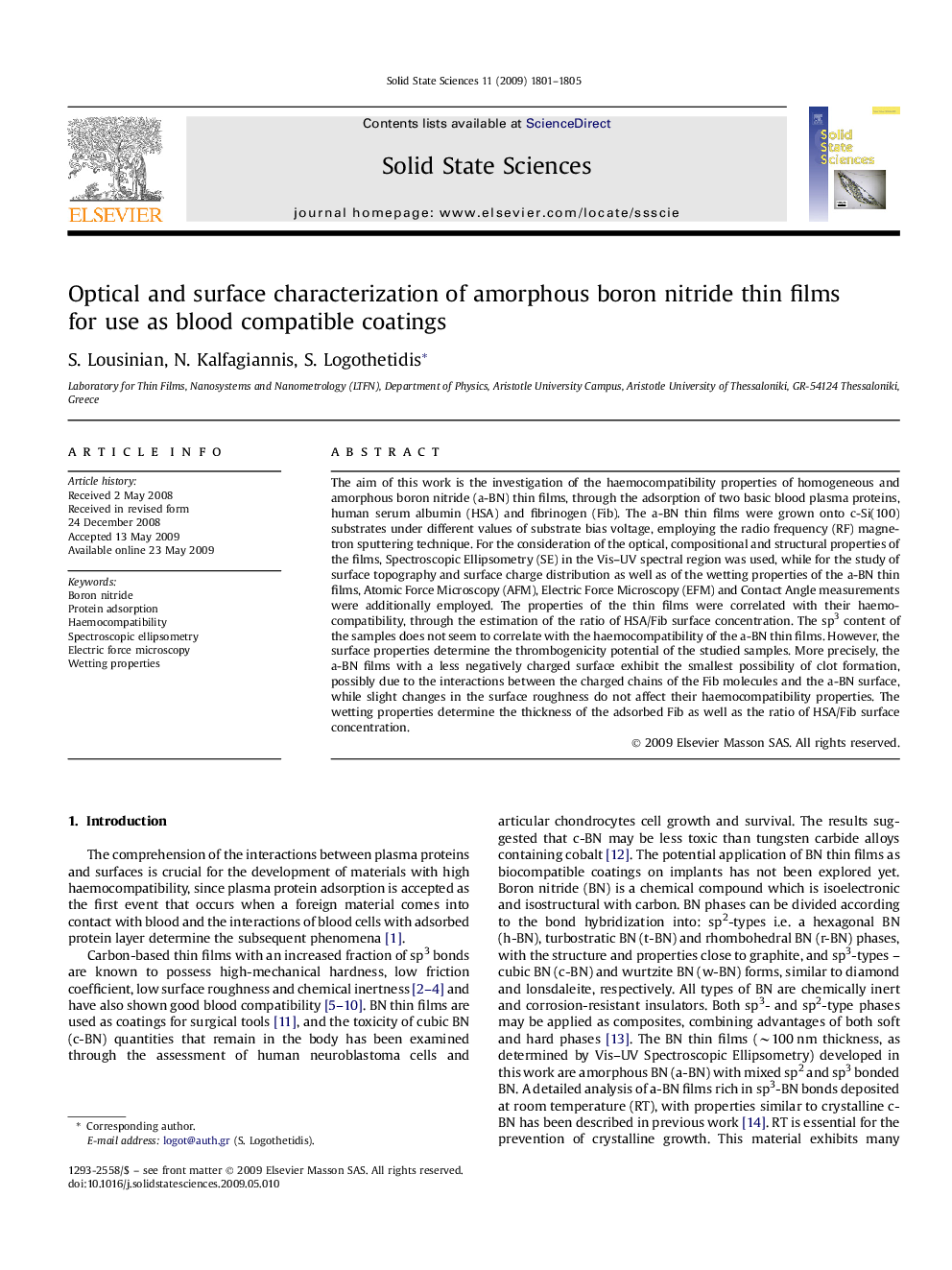| Article ID | Journal | Published Year | Pages | File Type |
|---|---|---|---|---|
| 1506191 | Solid State Sciences | 2009 | 5 Pages |
The aim of this work is the investigation of the haemocompatibility properties of homogeneous and amorphous boron nitride (a-BN) thin films, through the adsorption of two basic blood plasma proteins, human serum albumin (HSA) and fibrinogen (Fib). The a-BN thin films were grown onto c-Si(100) substrates under different values of substrate bias voltage, employing the radio frequency (RF) magnetron sputtering technique. For the consideration of the optical, compositional and structural properties of the films, Spectroscopic Ellipsometry (SE) in the Vis–UV spectral region was used, while for the study of surface topography and surface charge distribution as well as of the wetting properties of the a-BN thin films, Atomic Force Microscopy (AFM), Electric Force Microscopy (EFM) and Contact Angle measurements were additionally employed. The properties of the thin films were correlated with their haemocompatibility, through the estimation of the ratio of HSA/Fib surface concentration. The sp3 content of the samples does not seem to correlate with the haemocompatibility of the a-BN thin films. However, the surface properties determine the thrombogenicity potential of the studied samples. More precisely, the a-BN films with a less negatively charged surface exhibit the smallest possibility of clot formation, possibly due to the interactions between the charged chains of the Fib molecules and the a-BN surface, while slight changes in the surface roughness do not affect their haemocompatibility properties. The wetting properties determine the thickness of the adsorbed Fib as well as the ratio of HSA/Fib surface concentration.
Graphical abstractFigure optionsDownload full-size imageDownload as PowerPoint slide
